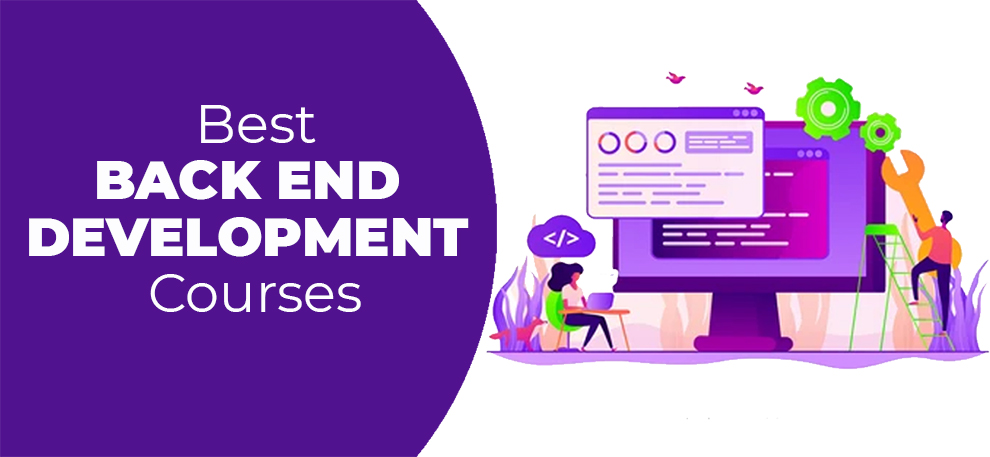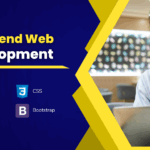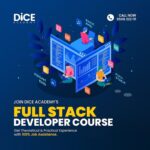For a long time, that was a complete mystery to me. The sheer thought of it felt like trying to decipher an ancient, alien language. But the curiosity nagged at me. I wanted to understand the engine, the gears, the pipes, the actual brains of a website. That’s when I decided to dive headfirst into a Back End Course. And let me tell you, it was one of the most eye-opening journeys I’ve ever embarked on.
The Great Unveiling: What Even Is Back End Development?
Before the course, my understanding was pretty fuzzy. I imagined servers as these giant, humming machines in dark rooms, constantly churning out data. While that’s not entirely wrong, a Back End Development for Beginners course really breaks it down.
Imagine a restaurant. The front end is the dining area: the beautifully set tables, the menu, the friendly waiter taking your order. The back end? That’s the kitchen. It’s where the chef (the server-side code) takes your order, talks to the pantry (the database) to get ingredients, cooks the meal (processes the data), and sends it back out to you via the waiter (the API). You never see the kitchen’s organized chaos, the sizzling pans, or the recipe books, but without it, there’s no meal.
That simple analogy was my first "aha!" moment. My course started by explaining this foundational concept: the back end is everything the user doesn’t directly see, but without which the front end would be just a pretty, static picture. It’s about building the logic, managing data, and ensuring everything runs smoothly and securely.
My First Steps: From Confusion to "Hey, I Get This!"
Starting a Back End Course felt a bit like learning to walk again, but on a tightrope over a pit of code. There were new terms thrown around: "server-side," "APIs," "databases," "frameworks." My brain felt like a sponge trying to soak up a waterfall.
We started with the absolute basics. What’s a server? How does it communicate with your browser? It’s not magic, it’s just a computer waiting for requests. We learned about different programming languages used for the back end. My course focused heavily on JavaScript with Node.js, which was great because I already had a tiny bit of front-end JavaScript experience. But many courses might dive into Python (with frameworks like Django or Flask), Ruby (with Ruby on Rails), or PHP (with Laravel). The beauty is, once you grasp the concepts, switching languages becomes less daunting.
The initial coding exercises were simple: creating a tiny server that just said "Hello, World!" to my browser. It felt incredibly trivial at first. But then, we expanded it. We made it respond to different requests, send back different messages. Each small success was a tiny spark of triumph, building confidence.
The Heart of the Matter: Databases and APIs
If the server is the chef, then the pantry is the database. This was a significant part of my Back End Development Course. Learning about databases felt like unlocking a secret library. Where does all the information live? Your user profile, your blog posts, your product listings – they all need a place to be stored, organized, and retrieved quickly.
We learned about SQL databases (like PostgreSQL and MySQL), which are like highly organized filing cabinets with strict rules. And then there were NoSQL databases (like MongoDB), which are more like flexible, free-form notebooks. Understanding why you’d choose one over the other, and how to "talk" to them using code, was a game-changer. Suddenly, the idea of persistent data – information that sticks around even after you close your browser – made perfect sense.
Then came APIs (Application Programming Interfaces). Oh, APIs! These are the unsung heroes of the web. Think of them as the menu and the waiter in our restaurant analogy. They define how different pieces of software talk to each other. Your phone app talks to a server through an API. Your favorite website talks to a payment processor through an API. My Back End Course spent a good deal of time on building RESTful APIs, which allow your front end to request, create, update, or delete data from the back end. It was like learning the universal translator for software.
The Nitty-Gritty: Frameworks, Authentication, and Error Handling
Once you understand the core concepts, a good Back End Course introduces you to frameworks. These are like pre-built toolkits that save you from writing every single line of code from scratch. Instead of building a car from individual nuts and bolts, a framework gives you a chassis, an engine block, and many standardized parts you can quickly assemble. Node.js has Express.js, Python has Django and Flask, Ruby has Rails, PHP has Laravel. Learning to use a framework accelerated my ability to build real applications dramatically.
Security also became a huge topic. How do you ensure only authorized users can access certain data? This led us into authentication (proving who you are, usually with a username and password) and authorization (what you’re allowed to do). It’s complex, with hashing passwords and generating tokens, but crucial for any real-world application.
And, of course, there was error handling and debugging. Trust me, your code will break. Things will go wrong. My instructor always said, "If it works on the first try, you probably did something wrong." Learning how to read error messages, trace your code, and systematically fix problems became an invaluable skill. It’s frustrating, sure, but the satisfaction of finding that tiny typo or logic error is immense.
The Big Picture: What I Gained from My Back End Course
Finishing that Back End Course wasn’t just about getting a certificate; it was about a fundamental shift in how I viewed the internet. I no longer saw websites as static pages or mysterious black boxes. I saw them as intricate systems, beautifully engineered, with a powerful back end driving every interaction.
Here’s what I truly gained:
- Problem-Solving Prowess: Back-end development is essentially a series of complex puzzles. You’re constantly figuring out how to store data efficiently, how to make systems communicate, and how to build logic that handles all sorts of scenarios. My logical thinking skills improved tenfold.
- A Deeper Understanding of the Web: I now appreciate the incredible infrastructure that powers our digital world. When I use an app, I’m not just seeing the buttons; I’m thinking about the databases, the APIs, and the server logic behind it.
- The Ability to Build "Real" Things: With back-end skills, I could finally build applications that do something. Not just pretty designs, but applications that can manage users, store information, and perform complex operations. This was incredibly empowering.
- Career Opportunities: The demand for back-end developers is consistently high. Companies always need people who can build and maintain the core logic of their digital products. This course opened up a whole new realm of possibilities for my career.
Is a Back End Course Right for You? My Advice for Beginners
If any of this resonates with you, if you’re curious about the mechanics behind the magic, then yes, a Back End Course is absolutely worth considering.
Here’s my honest advice for anyone thinking about taking the plunge:
- Embrace the Challenge: It won’t always be easy. There will be frustrating moments, head-scratchers, and times you feel completely lost. That’s normal. Persistence is your best friend.
- Don’t Rush: Good back-end development takes time to learn. Focus on understanding the concepts deeply rather than just memorizing syntax.
- Build, Build, Build: The best way to learn is by doing. Don’t just follow tutorials; try to build your own small projects, even if they’re simple. Try to create a basic to-do list app, a simple blog, or a user registration system from scratch.
- Find a Good Course/Community: Look for a Back End Course that emphasizes practical projects, has clear explanations, and ideally, offers support or a community where you can ask questions. Online platforms, bootcamps, or even university programs can be great options. Read reviews!
- Start with Fundamentals: Ensure the course covers server basics, common back-end languages (and why they’re used), databases (SQL and NoSQL concepts), and APIs. These are your building blocks.
- Patience with Yourself: You won’t become an expert overnight. Celebrate small victories, learn from your mistakes, and enjoy the process of unraveling the web’s fascinating complexities.
Taking that Back End Development for Beginners course was more than just learning to code; it was about transforming my perspective and gaining a powerful new skill set. If you’ve ever wondered what goes on behind the digital scenes, I highly recommend stepping into the kitchen. You might just find your new passion.



